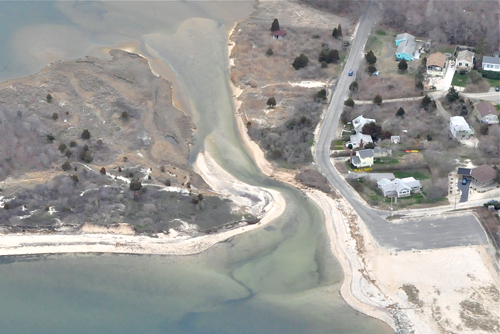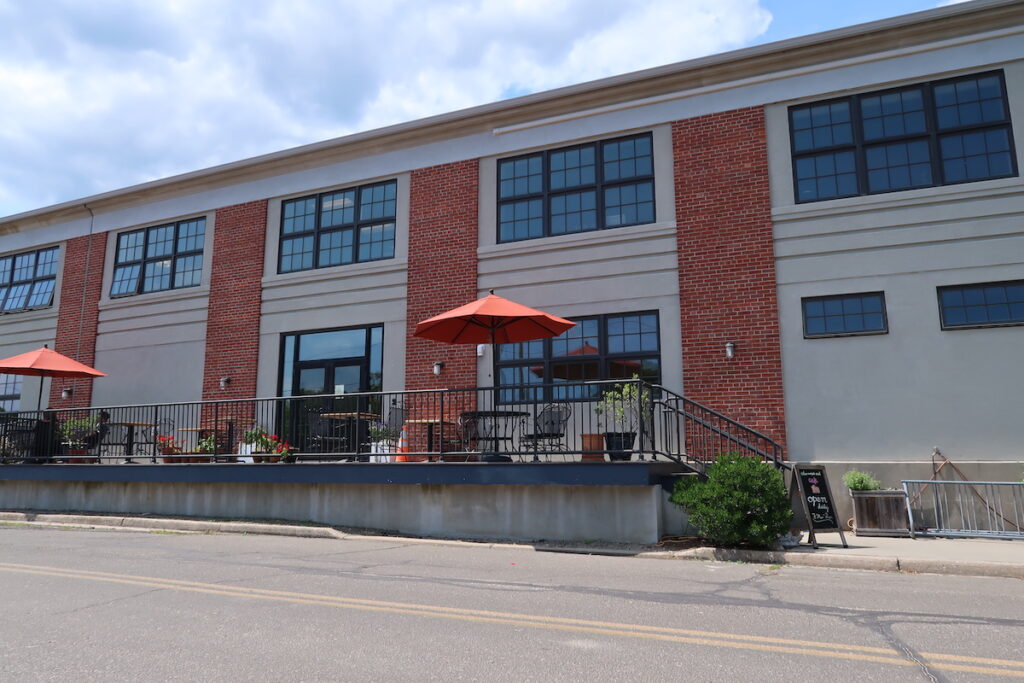Report outlines ways to improve Goldsmith Inlet

Next year promises to bring big changes for Goldsmith Inlet. Or, at least, more studies about big changes.
Last Tuesday, the Town Board received the final recommendation from eDesign Dynamics, the company hired to measure tidal flow and the rate at which sand is being deposited in the inlet.
The study showed that the inlet’s water quality will continue to deteriorate due to large deposits of sand that severely limit tidal flow.
The 63-page report indicates using a more modern dredging technique to improve tidal flow. Unlike the dredging done in recent years, the company recommends leaving in place the sand “spit” on the outer east side of the channel, which helps keep sand from flowing into the inlet.
Related: Decades after jetty was built, problems persist at Goldsmith Inlet
“Our goal with leaving the spit is to see if sedimentation of the inlet is reduced,” eDesign Dynamics managing partner Eric Rothstein said. “This needs to be coupled with two things: dredging of the sill and being ready to prevent against erosion of the dunes to the east of the inlet.”
For these reasons, eDesign Dynamics suggests removing the spit only if it appears to threaten the integrity of the dunes to the east. If this is the case, and the spit has pushed the channel so far to the east that it is encroaching on the dunes there, then intervention is appropriate, the report states.
The firm’s engineers believe that dune erosion to the east can be avoided for the most part by armoring the base of the dune to protect against encroachment from the channel. This armoring could take several forms, the simplest of which may be the use of stone reinforcement, according to the recommendations.
The firm also recommends that the town seek amendments to its DEC permit to dredge the interior of the inlet, which would extend farther south than is currently allowed. It also advises dredging when the tide is low and the pond is emptying, carrying any suspended sediment out to the Sound.
Ultimately, eDesign dismissed the option of building a second jetty on the east side of the inlet because doing so would require additional studies and significant expense and did not appear to have Town Board support.
Mr. Rothstein had told the Town Board in August that, in the long term, a second jetty was the most likely way to reduce sediment buildup and increase tidal flow.
At that time, the company estimated that a new jetty would cost the town between $3,000 and $5,000 per linear foot.
“Interventions on this scale will also require significant capital investment and a rigorous regulatory review and approval process and for these reasons are not included as part of EDD’s recommendation,” the report states.
More studies will probably be needed before the town implements any recommendations, Supervisor Scott Russell said.
“It’s a difficult challenge from every aspect,” he said.
The town has posted eDesign Dynamic’s final recommendations on its website and is encouraging the public to comment on them before any action is taken.








